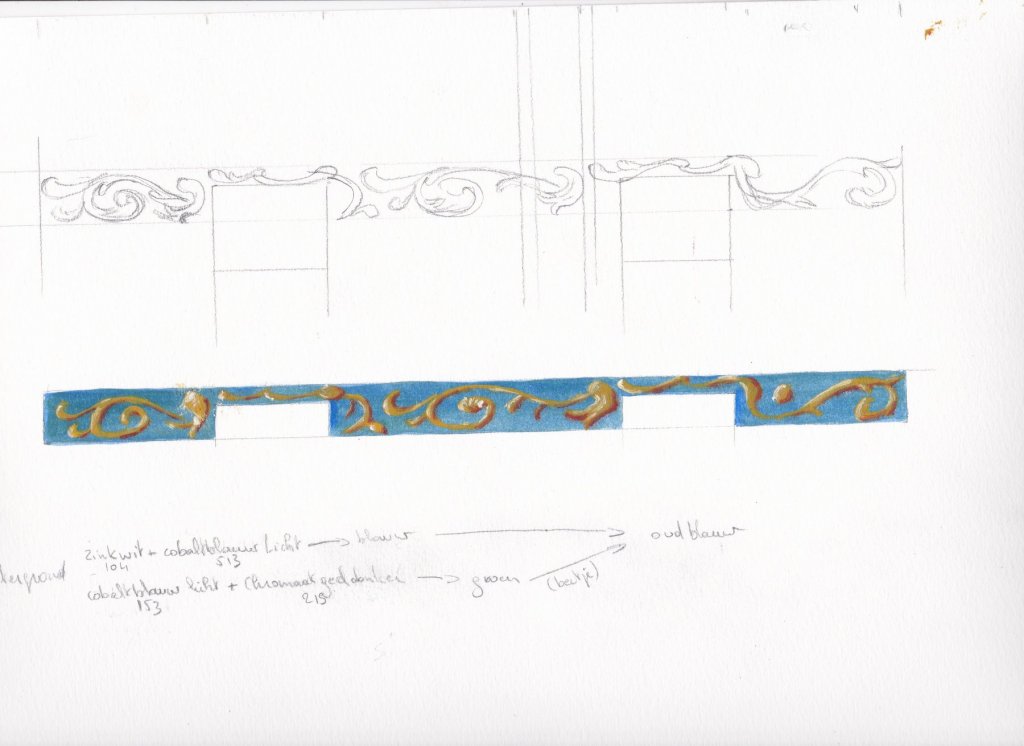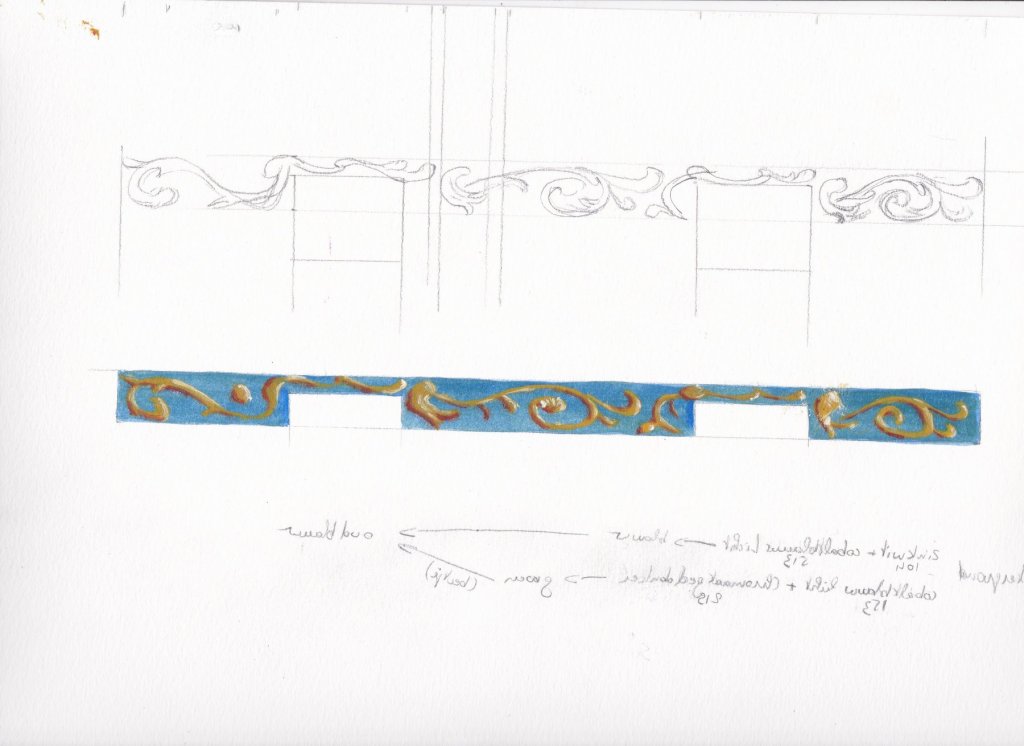-
Posts
1,553 -
Joined
-
Last visited
Content Type
Profiles
Forums
Gallery
Events
Everything posted by G.L.
-
Now comes the most difficult part, the decorations. I am not an experienced painter. Painting the molding on a flat paper is not so difficult, but reproducing it on the model which has obstacles as fenders and ladder steps is a whole other story. With blood, sweat and tears and of course with yellow paint I can produce something that looks a bit like ornamental garlands. It still has to be finished with white light spots and darker yellow shadows. On the second picture you can see that the gaps between the planks were not yet filled when I was painting the moldings.
-
Congratulations, Derek. That was a smooth build. Your cross section looks very neat. Well done! I enjoyed very much your companionship in this group project. Disregarding some dormant projects, I believe that I am now the only active builder left on the Triton cross section forum (gives me a somewhat lonely feeling). Do you have already an idea for a following build? G.L.
-
I make first a design on paper. First in pencil to sketch a more simplified decoration than in the picture above. Then I paint in oil paint to find the correct colors. The blue background in particular needs some experimenting before it is acceptable. I scan my design and print it in mirror image to have a layout for both sides.
-
I thought about some solutions. Making a wood paste with sanding dust and varnish, etc... but I think it is better to fill the gaps with solid wood. So I make some thin planks in oak of which I sand a sharp side. I put some wood glue on the sharp side and knock it gently in the seams with a light hammer. When the glue is dry I cut the excess of the planks away with a sharp chisel and sand it flush with the hull. There are still some gaps, but trust on it that they will fill with sanding dust when sanding between the varnish layers.
-
Thank you Christian. Yes she is looking good, except for one thing: Between some planks gaps are appearing. While planking, the planks fitted together nicely, but now here and there they opened from each other. I think that the reason is that my workshop is not heated and I planked during winter in a rather cold and sometimes a bit dank workshop. After planking I kept my cross section in house where it is warm and dry so .... Some seams are a bit too wide (the frames are visual between the planks) to leave it as it is.
-
16.5 I have built my hull in oak, the wood that was used to build the real shrimpers. I would like to keep the grain of the wood visible through the paint. Therefore I use oil paint like painters use to paint on canvas. My wife is going to the art school, so I find everything that I need in her painting box. I use the paint strongly diluted with turpentine and to avoid that I have to wait several days before it is dry, I add some drips of siccative oil. In the 19th century most of the fishing boats in our region were black tarred, I want obtain a color which closes as much a possible a tarred hull. Therefore I mix lampblack with kraplack red. 1/3 red and 2/3 black above the waterline, 2/3 red and 1/3 black below the waterline. Before the paint dries completely, I rub it up with a soft cotton rag to spread the color equally over the surface.
-

ancre La Salamandre by tadheus - 1:24
G.L. replied to tadheus's topic in - Build logs for subjects built 1751 - 1800
So much small details, Pawel! Tour mortars look ready to fire. Super job! G.L.
About us
Modelshipworld - Advancing Ship Modeling through Research
SSL Secured
Your security is important for us so this Website is SSL-Secured
NRG Mailing Address
Nautical Research Guild
237 South Lincoln Street
Westmont IL, 60559-1917
Model Ship World ® and the MSW logo are Registered Trademarks, and belong to the Nautical Research Guild (United States Patent and Trademark Office: No. 6,929,264 & No. 6,929,274, registered Dec. 20, 2022)
Helpful Links
About the NRG
If you enjoy building ship models that are historically accurate as well as beautiful, then The Nautical Research Guild (NRG) is just right for you.
The Guild is a non-profit educational organization whose mission is to “Advance Ship Modeling Through Research”. We provide support to our members in their efforts to raise the quality of their model ships.
The Nautical Research Guild has published our world-renowned quarterly magazine, The Nautical Research Journal, since 1955. The pages of the Journal are full of articles by accomplished ship modelers who show you how they create those exquisite details on their models, and by maritime historians who show you the correct details to build. The Journal is available in both print and digital editions. Go to the NRG web site (www.thenrg.org) to download a complimentary digital copy of the Journal. The NRG also publishes plan sets, books and compilations of back issues of the Journal and the former Ships in Scale and Model Ship Builder magazines.




